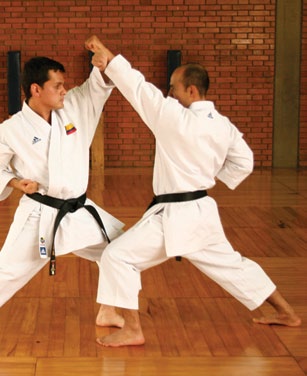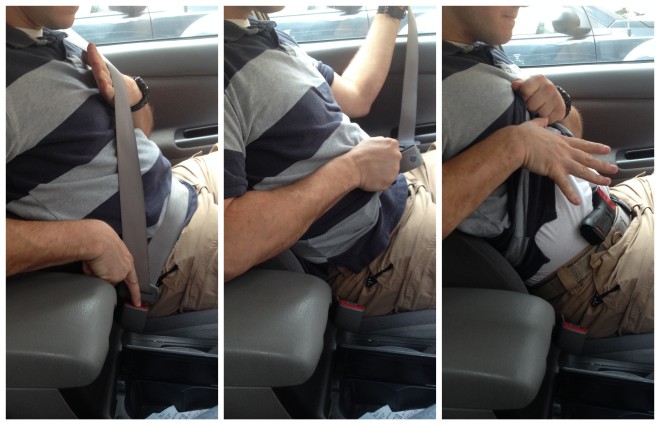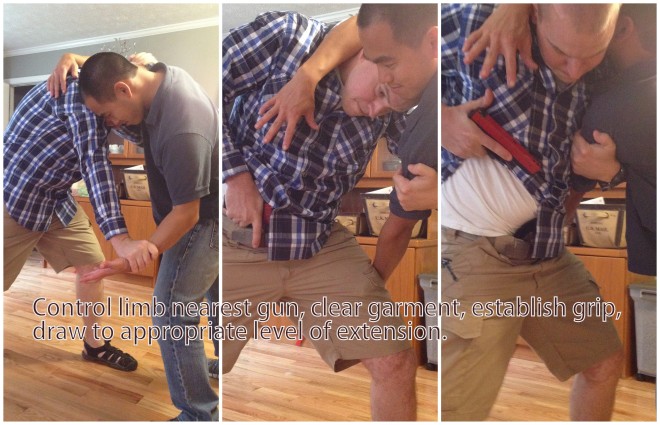“The Draw Stroke is the Draw Stroke is the Draw Stroke.”
-Paul Gomez explaining the drawstroke from several unorthodox positions
Paul Gomez, the personal protection integrator who passed away well before this time, once said that simple phrase that has stuck with me ever since. He was good about quips that you would have to contemplate and reflect on. At the time, the realities of self-defense and ‘The Fight’ were starting to become clearer to me. I realized that if I had to use my gun, I wouldn’t be slapping iron at noon in a dusty street while the town folk were watching from the front of the saloon (Insert your own personal gunfight fantasy).

Upon watching and reading about the dynamics, lighting conditions, circumstances, terrain, distances, number of criminals, and locations in defensive shootings (gun fights, or gun battles) there was only one thing that was consistent. This is that the good guy didn’t get to choose when it went down. We, as the reactionary party, are attacked when it’s the worst possible time for us, and the best possible time for them.
As I wrote about in practice by the odds, a person should spend most of their time/resource constrained practice time working the most likely needed skill sets and streamline their mechanics to cover the widest set of circumstances one possibly can.
Your gunfight (hopefully we get lucky enough to make it a shooting instead) might be at thirty feet in a parking deck, at arms range in bank, in the hallway outside of your child’s room, in the front seat of your car, or on your back next to an ATM. So how can we as responsible and thinking gun owners, try to account for as MANY of these scenarios as possible with one set of mechanics for getting our gun into play? We can’t try to do something different for each scenario and have a different way to get the gun into play for each one. The decision tree quickly branches into an unmanageable (and slow) pile of options. The method of ‘if this, then this’ is why certain martial arts fall apart under pressure.

So we need a draw stroke that works within as many of the scenarios as we can imagine. We need an ‘if anything happens, you only need this one movement’ type of thing. Luckily for me, there are guys like Gomez, Craig Douglas, Greg Ellifritz, Cecil Burch, Chris Fry, James Yeager, Paul Sharp, Larry Lindenman, Aaron Little, and all of the gentlemen and scholars that teach a robust universal draw stroke and it’s integration into a self defense program.
The universal draw-stroke is so useful because with one mechanic we can handle probably 99% of all scenarios that one could imagine. It works while standing, lying, seated, while grappling, in a competition, from appendix or behind the hip, in a retention position, whatever you’ve got.
The Steps
- Clear obstructions which could foul building a full (fuckin’) firing grip. This one can be deceptively complicated. In the simplest case with an open top holster in a shooting range, you can actually skip this step completely. Slightly more complicated might be breaking holster retention devices or clearing concealment garments. If seated, you might have to clear garments and a seat belt. If you’re in a fouled up tangle (gun grapple) of arms and legs, it might mean doing an arm drag and controlling the nearest arm to the gun. This step has the most depth of any of the parts of the draw-stroke. You can go deep deep deep into training all the complications that this one step can cause.
- Establish a full firing grip. Building the grip with all of the proper index points is key. This is the first, and probably last time in your fight that you’ll have to build a good grip. Get a lot of practice and make it count.
- Begin an efficient (no wasted movement) draw in which the gun is never lower than it was a moment before. Keep your elbows from tracking away from your torso. Being in proximity to non-involved parties that you don’t want to hang up on while drawing and opening holes between your arms and your torso for the bad guy to control your arms being the primary reasons.
- Move to an indexed position of retention. This is important because you may need to shoot with someone in contact with you, swinging a pipewrench, or otherwise in your intimate space. If you need to shoot from here, you can stop your draw and begin shooting.
- Move the gun to a horizontal position under the dominant eye. Your hands can come together at this point. Or for one handed shooting, you can begin pressing the gun out to full extension. While the gun is coming out, you should be bringing the gun into the eye-target line as quickly as possible. This gives you time to refine your sight picture as you are reaching full extension, which will allow you to start shooting quicker.
Example Photos:





In Closing
I think spending the time to drill and ingrain this draw-stroke is time well spent. Having the framework to shoot from different positions without having to think about the mechanics is crucial. You’ll have enough other things to think about. When learning this draw, you should seek training under a watchful eye so you learn all the nuance involved. When you’re drilling and learning this draw, strive for perfect repetitions. Try to hit all of the index points so you will have the kinestetic awareness of how your body feels and where it is in space. I would pause at each way point along the way, imagining myself as a robot moving perfectly.
What you’ll probably find is that when you’re going for supreme speed in a competition or when you know you’re shooting at distance, the sharp corners of your draw will ’round’ and you’ll move in a more direct path to the target. That’s OK. You’re a thinking being and you will know when it’s appropriate. Having a framework to fall back on is what matters here. One Draw Stroke to rule them all… or something.
Getting Training
Here’s a list, in no particular order, of some trainers who can teach you this stuff:
- Craig Douglas http://shivworks.com/
- Aaron Little http://www.truthincombat.com/PerformanceEdgeTraining.html
- Cecil Burch http://www.iacombatives.com/
- Greg Ellifritz http://www.activeresponsetraining.net/upcoming-classes
- Chris Fry http://www.mdtstraining.com/
- Paul Sharp http://sharpdefense.me/
- Claude Werner http://tacticalprofessor.wordpress.com/
- Jeff Bloovman http://www.armeddynamics.com/
- James Yeager http://www.tacticalresponse.com/
- Steve Charles http://www.stonyfarmdefense.com/
- Probably many more, any omissions are only because I haven’t personally trained with them.




